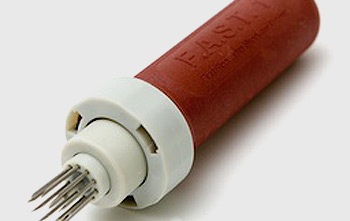
Intraosseous Access Devices
In early 2024, the Infusion Nurses Society (INS), recognized as the global authority in infusion therapy, released the updated Infusion Therapy Standards of Practice. The INS sets the accepted standards for infusion therapy practice for all healthcare settings. This course is based on the current best practices as defined by the Infusion Nursing Society and other governing agencies such as the CDC, and FDA.
Questions? Check out our FAQs page and How Online IV Certification Works!
Objectives
Upon completion of this course, the participant will be able to:
- Describe the purpose of the intraosseous device.
- Discuss the indications for use of an IO device.
- Describe the different types of bones used for an IO device.
- Discuss and describe bone structure.
- Identify the different blood supplies to the bone cortex.
- Discuss and Demonstrate the proper location for IO insertion.
- Identify the types of IO devices.
- List 4 primary site for using an IO device.
- Compare and contrast the rates of infections for IO devices, PIV’s, and CVC’s.
- Identify at least four complications of IO devices.
- Describe contraindications for IO placement.
- Determine which size Needle Set is most appropriate for EZ-IO device.
- Discuss and demonstrate the proper steps for insertion of the different IO devices.
- Discuss and demonstrate how to care for and remove the different IO devices.
- Discuss drugs and fluids NOT acceptable for IO use.
- Describe other considerations when using an IO device.
Curriculum
Chapter 1: Introduction to Intraosseous Devices
- History
- Purpose of an IO
- Indications for Use
Chapter 2: Anatomy and Physiology of Bones
- Types of Bones
- Compact Bone
- Cancellous Bone
- Osteons
- Blood Supply of Bone
- Nutrient artery
- Periosteal arteries
- Epiphyseal arteries
Chapter 3: Types of Devices
- Manual
- Impact Driven
- Drill Powered
Chapter 4: Intravenous Catheters‐Intraosseous Devices, and Central Venous Catheters
- Rates of Infection
- Complications
- Position Statements
Chapter 5: Education and Training
- Insertion of IO Devices
- EZ‐IO Insertion (cont)
- Removal of IO devices
Chapter 6: Other Considerations
- Pain Management
- Contraindications
- Other Considerations
Chapter 7: References
- California Bill 241
- Implicit Bias in Healthcare
- What is Implicit Bias?
- Implications of Implicit Bias in Healthcare
- How to Reduce Implicit Bias
Price: $48.00
Contact Hours: 4.5

Course Author

Kevin Stansbury
Kevin Stansbury, MBA, BSN, BS, RN, CEN, VA-BC, is a Registered Nurse with over 25 years’ experience in the medical field including critical care, emergency medicine, and infusion therapy. He is currently living and working in the Central Valley of California. Kevin is a 13-year veteran of the U.S. Army where he served as a combat medic and nurse. He received several military decorations during his tours in Desert Shield and Desert Storm, including an Army Achievement Medal, an Army Commendation Medal, and the Kuwaiti Liberation Medal. Kevin also received his Expert Field Medical Badge while serving two tours in Korea.
Read Full BioCourse Accreditation
See our Accreditation Statements page to view our accreditation information.